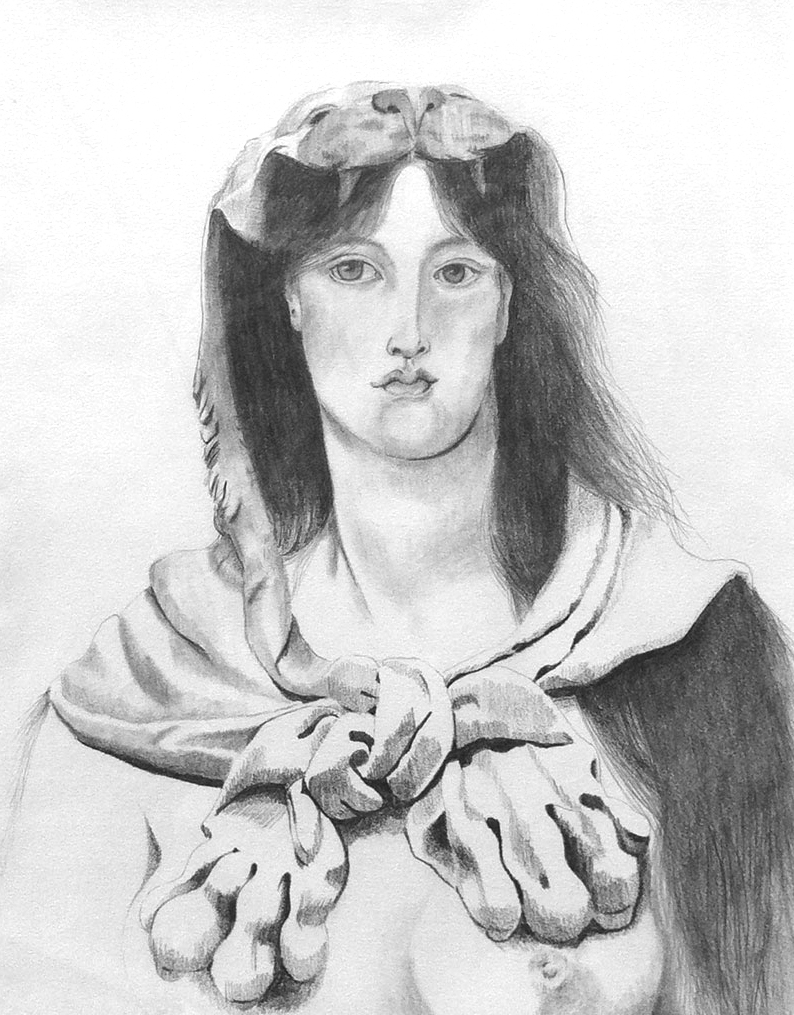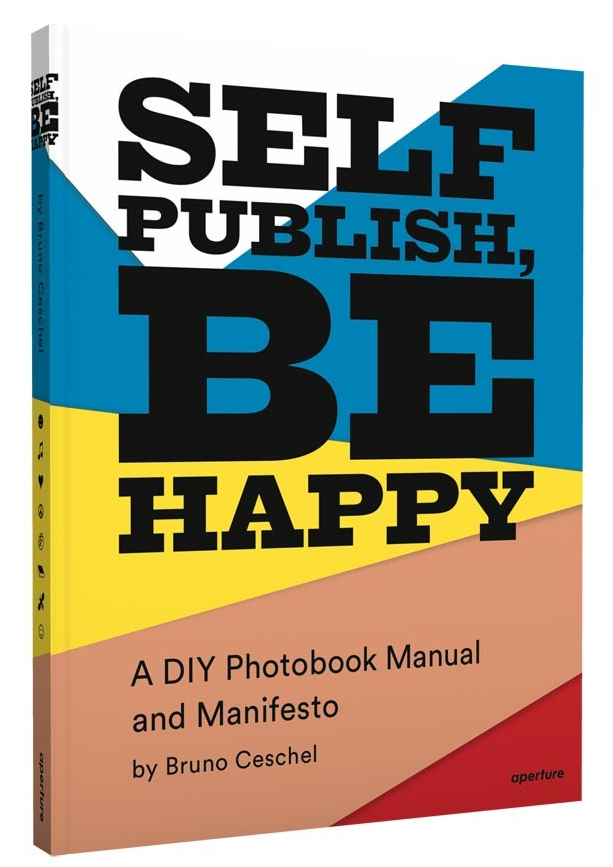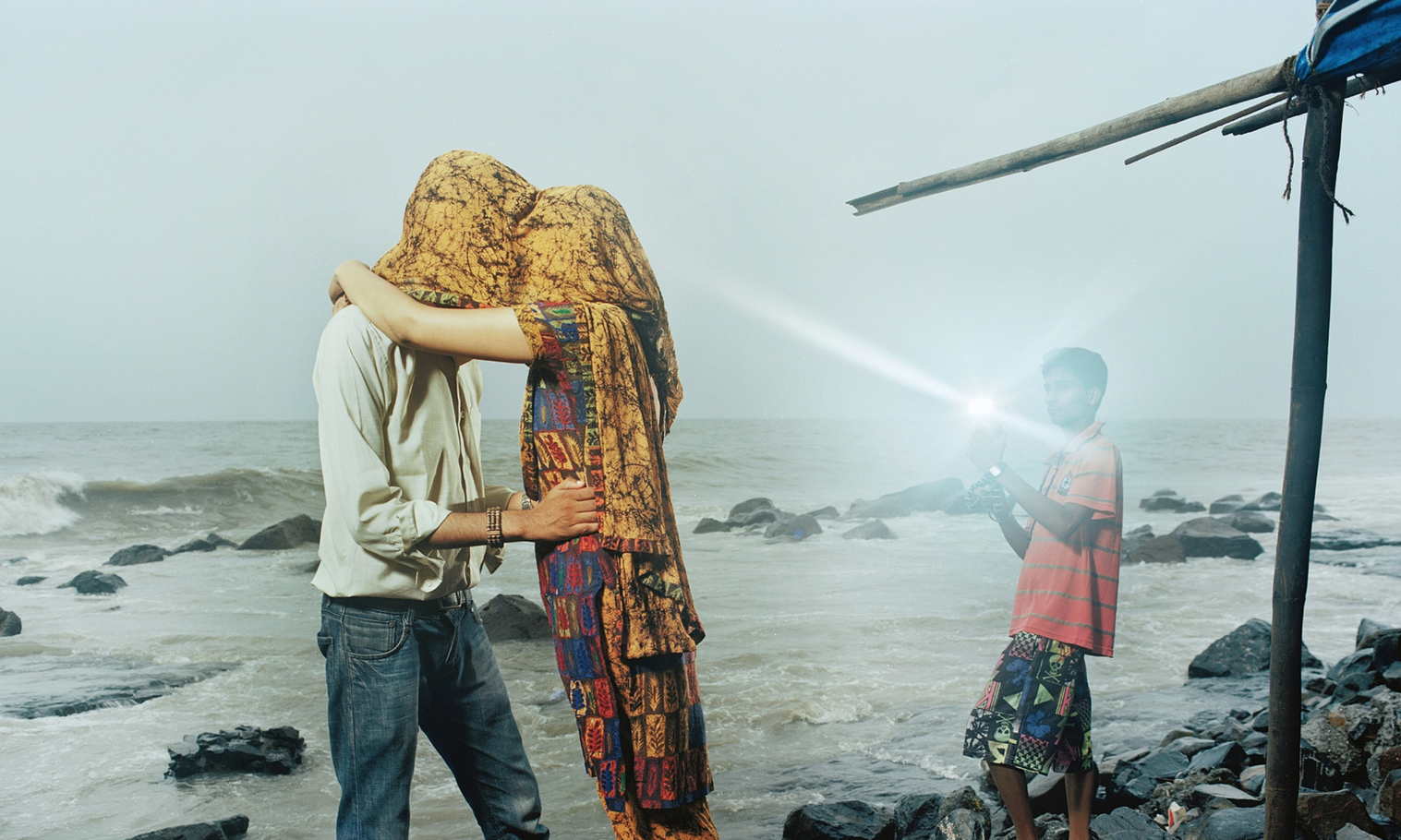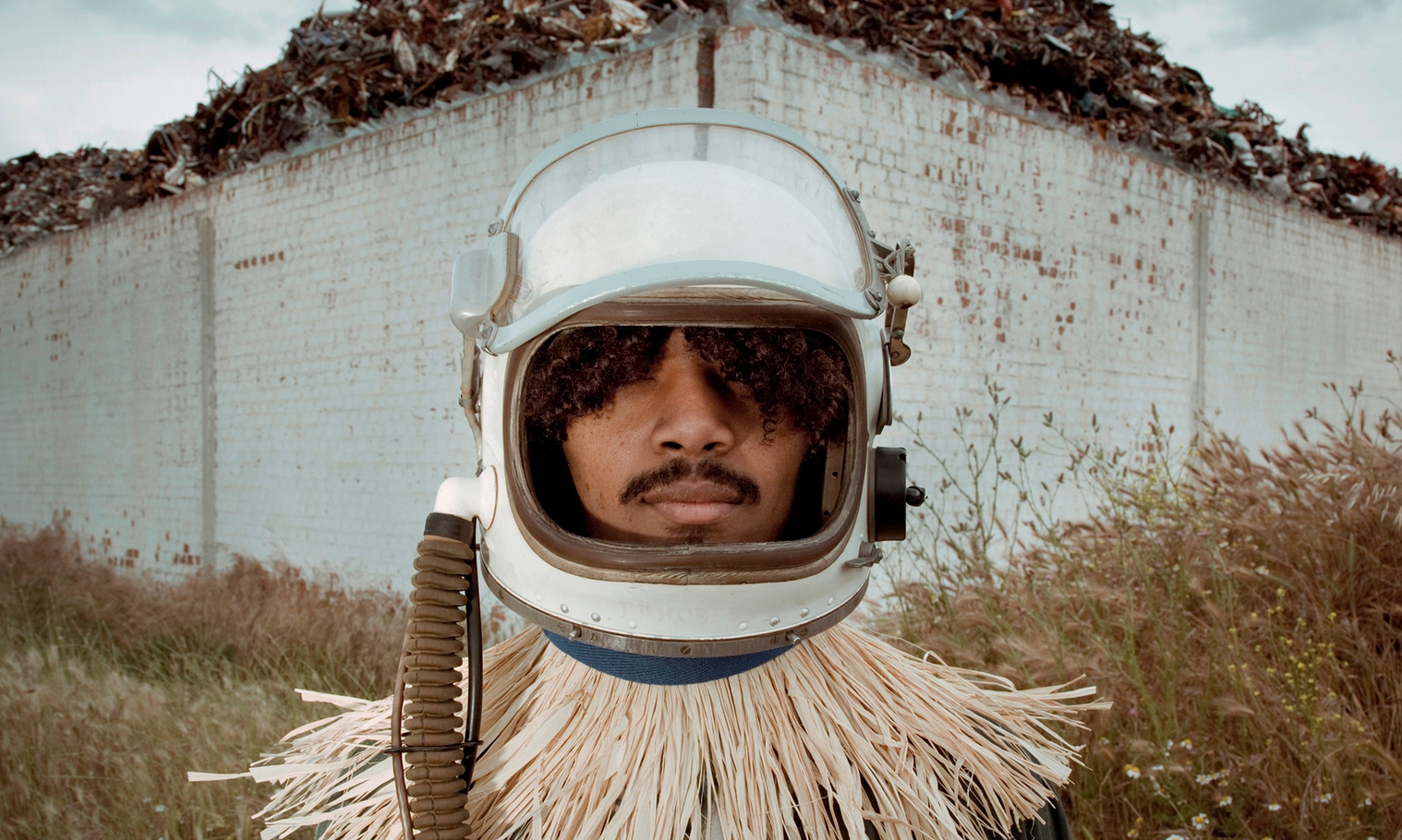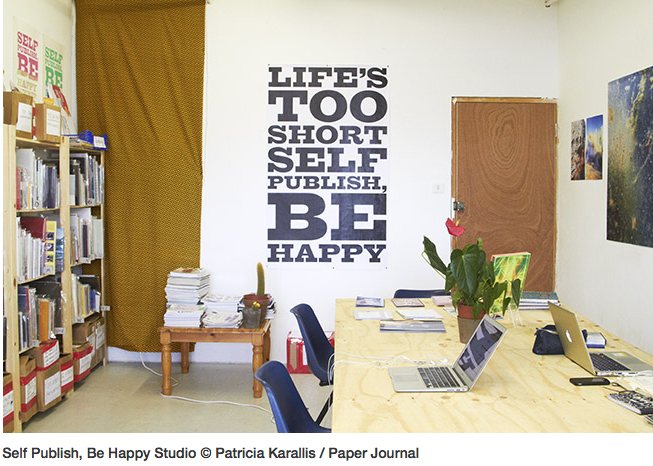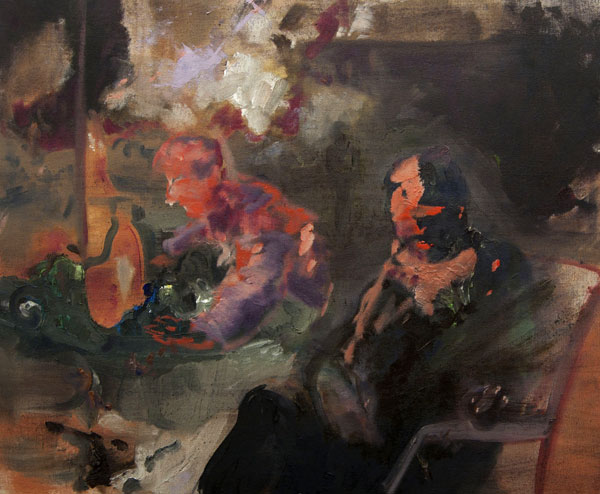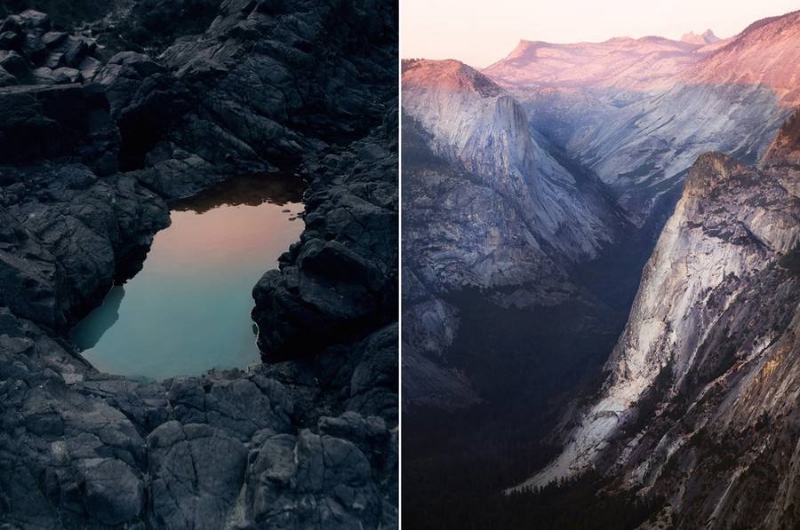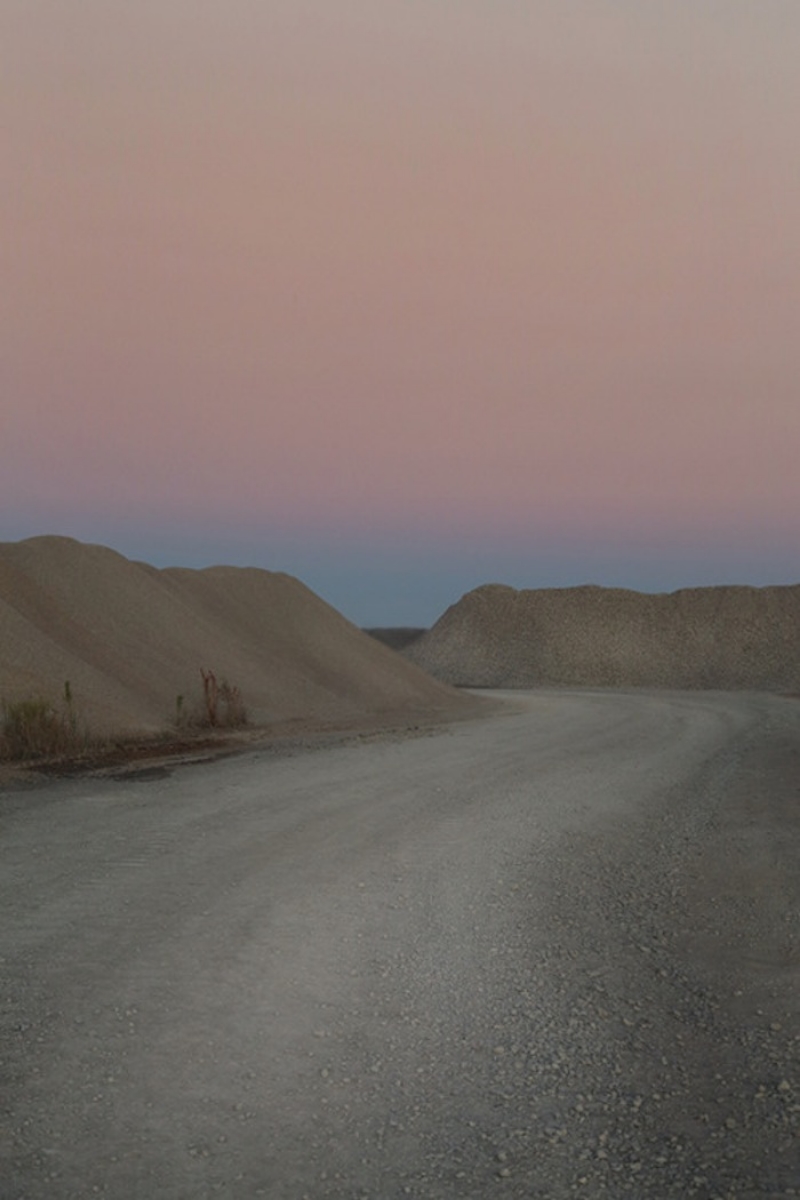delaney allen
DELANEY ALLEN IN NEW MEXICO
A piece from Delaney Allen's 2012 series, Painting a Portrait now on view at 516 ARTS in New Mexico.
Delaney Allen's photographs are currently on view in Albuquerque, NM, in Future Tense at 516 ARTS. This is part of the PhotoSummer 2016 exhibition programming in partnership with the University of New Mexico Art Museum. Take a look at this great interview co-curator of the exhibition, Stefan Jennings Batista, recently did with Delaney about his work and participation in the show.
FAVE3: LUSI
DELANEY ALLEN, 2.1 (Documentation of Landscape), 2016, archival pigment print, 30 x 20"
This is one of my favorite pieces of Delaney's because it is simultaneously so simple and so complex; I love the bright light in the foreground contrasted with the deep blues and shadows of the back. It is calm while maintaing the eerie and fantastical nature of Delaney's work.
Tote bag by MODERNWOMEN LA, modeled by Emma
My go-to carry all tote that packs a punch. A perfect statement piece with some pretty empowering text on the front. We are nothing without feminist art!
Maggie Nelson, Bluets, Wave Books, 2009
"I have enjoyed telling people that I am writing a book about blue without actually doing it."
I'm on a roll here with blues and gender and Maggie Nelson's Bluets combines the best of both worlds. For me, this is one of those books that I picked up once and will carry with me for the rest of my life and am so happy we carry it in our shop. A must read.
DELANEY ALLEN FEATURED ON IT'S NICE THAT
Take a look at Delaney Allen's new series A R T I F A C T featured on the stellar international site, It's Nice That.
INTERVIEW: DELANEY ALLEN
We recently caught up with Delaney Allen to discuss his current show A R T I F A C T now on view at Nationale through May 9, 2016.
Gabi Lewton-Leopold: Your current series A R T I F A C T takes on many themes and subjects, from costumed self-portraits to dramatic landscapes. Although we’ve seen these elements before in your earlier projects, there seems to be a deliberate move towards artifice and manipulation—digital collage, use of a green screen—within these images. Is digital alteration important to the series and to the overarching narrative?
Delaney Allen, Figure 1.14 (Self Portrait), 2016
Delaney Allen: Upon first examination, the intention is for one to enter into this world with a sense of mystery or bewilderment. Acting as a larger, overarching theme, the creation of something unknown, yet familiar, exists throughout A R T I F A C T. Manipulation is present but is a lesser, casual theme.
Speaking more towards manipulation, those devices were tools that I used like the application of camera itself. Utilizing those elements granted me the means to further the series in the way in which I am accustomed to working—individually without assistants (on location or in the studio). It also allowed the installation of new characters into the body of work, dissuading possible repetitiveness from reoccurring throughout. Those small facial glimpses were important, but the factors into their creation were less so. Once that revelation of digital manipulation is known concerning the creation of some imagery, the viewer can change their approach to the series. Eventually, that investigation and process came more as a means to problem solving and expansion than anything else.
GLL: Art historical references come across in the series—images referencing Dutch still life, Cubism, Dada, and Surrealism, among other influences. How do you see this work in relation to these movements of the past?
DA: I referenced those movements as I began to frame the series. They were specifically key in building the still life imagery. When still life painting began, as in the early Dutch paintings, it started with flowers or kitchen items laid out on the table. At that point, they were referred to as fruit or flower pieces. With that, it became vital to adopt the idea into A R T I F A C T to lay the groundwork for building the fictional history.
Figure 3.2, Figure 3.3, and Figure 3.8 were direct responses to that early investigation. But with those familiar elements in place, I looked to move beyond a direct acknowledgment, feeling a need to blur the lines of art history. Figures 3.2 and 3.3, at least to me, show tendencies towards Cubism specifically.
Delaney Allen, Figure 3.2 (Still Life), 2016
Delaney Allen, Figure 3.3 (Still Life), 2016
Pablo Picasso’s still life, Mandolin and Guitar became a prominent fixture of reference when I began to dissect the images and build them back up again in the frame. Looking at Mandolin and Guitar, one can identify the similarities within my still lifes as I attempted to flatten and distance portions of the images. The same can be found in Figure 3.8 and its association with paintings like Georges Braque’s The Studio (Vase before a Window).
Pablo Picasso, Mandolin and Guitar, 1924
Georges Braque, The Studio (Vase before a Window), 1939
Using mundane objects found within the studio, Figure 3.8 emulates the Cubist manner of breaking up and flattening of the image through color and line.
Delaney Allen, Figure 3.8 (Still Life), 2016
At the same time, those photographs, as well as others throughout the series, pull from the “New Formalism” movement occurring in photography at the moment. Artists such as Lucas Blalock and Daniel Gordon became aides when needing to look away from what one might consider straight photography. Although most New Formalism photographers give away their hand at play, I collected the ideas that their work is based on and implemented those in a less detectable way. While their photographs typically display the use of digital editing, I tried to minimize the moments in which I gave details away using similar processes.
Lucas Blalock, Strawberries (Fresh Forever), 2014
GLL: In many of your studio self-portraits, which are often filled with layered and textured fabrics, you allow us to see the materials used to create the work—tape, unprinted edges of fabric, the studio wall, your foot peeking out beneath fabric, and so forth. These moments take us out of the fantasy and expose the process. Why do you choose to include these elements?
DA: With the studio portraits, I implemented certain elements and techniques when producing the work. Those components range from the flattening of the subject into sections of the background, veiling or masking occurring that mimicked some of the more abstracted landscape photography in the series, digital manipulation and smaller moments exposing the process like you mentioned. With the disclosure of those smaller moments specifically, my intention was to show the artist's hand in a way that would possibly direct the audience, at times, to questioning what they are seeing.
Beginning with the title of the work—A R T I F A C T—my objective was to build this fictitious community and history. But playing off the ideas of fact versus fiction, and even more pointedly, the belief in the history of photography that what we view is truth, I aimed for entry points that could allow for a sense of confusion or questioning that authenticity. We’re naturally taught to believe what is placed in front of us is truth. Knowing this, I purposefully designed and executed small giveaways hidden throughout the series that could discount that idea.
Delaney Allen, Figure 1.10 (Self Portrait), 2016
Expanding beyond the self portraits, these elements develop throughout the body of work. Still life images mixed physical and digital manipulation. Photographs would be dissected, at times applying new affects through rephotographing the imagery before doing any digital manipulation. Figure 3.4 exists completely as a level of manipulation to Figure 3.3.
Delaney Allen, Figure 3.4 (Still Life), 2016
Delaney Allen, Figure 3.3 (Still Life), 2016
The image is solely a layer built in Photoshop that was applied to the still life. With its inclusion, it references that artist's hand previously mentioned. Landscape images contain these components as well. Paint applied in post-work allowed me, as the artist, to further control the environment that I built, as well as giving clues into the unnatural world that was assembled. Ultimately, what is displayed as fact will contain an either sizable or minuscule fiction.
GLL: Self-portraiture has long been a strong theme in your work. You’ve done so much to hide yourself, from covering your face in fabric, to now, in this current series, actually superimposing another face on your body. I can really feel the tension between presence and erasure of the artist within A R T I F A C T. What are your thoughts on the importance of self-portraiture within your practice?
Delaney Allen, Self Portrait No. 1, 2011
Delaney Allen, Figure 1.6 (Self Portrait), 2016
DA: The importance of self-portraiture is huge in my approach to making. Dating back to when I was introduced to French auteur theory as an undergraduate studying film, I found issues with the amount of authority and collaboration in film and who, ultimately, could control aspects of the final product. I slowly began the shift away from filmmaking and towards photography, eventually settling on the mindset that self-portraiture, to me, is a truer form of individual art-making.
Who ultimately owns a photograph in regard to its finalized outcome? When considering portrait photography, does the truth lie on the sitter or the photographer, or does a combination lead to a partnership? Questioning these involvements within photography has been the root of how I fashion my practice, specifically in my handling of portraiture. With A R T I F A C T, the management of the sitter/photographer issue led the work to a slight blurring of lines when incorporating new approaches and techniques. Spending months scouring various fashion magazines, I amassed dozens of assorted aspects of the human body with the idea of assimilating them into the series. Ultimately building this fantasy-driven community from scratch using my frame as a template. With this unique approach, I retained control of the figure while allowing the slight, unveiled components to build individual portraits for the series.
As mentioned, with the presence and erasure of the artist, the concept of blending found imagery with self-portraiture granted the series the illusion of a society built out of the artist. If I explicitly used myself, my facial features in each portrait, A R T I F A C T would have suffered a limited narrative, failing to root the viewer in the environment. Purposely masking figures, incorporating others faces and collaging of images, allowed for a development within my particular history of self-portraiture.
GLL: Along with self-portraiture, the natural world is a consistent subject as well. At times they act as contrasting elements, and in other images they meet (specifically in Figure 1.1, Figure 1.3, Figure 1.14). What are your thoughts on how these different subjects coalesce in one body of work?
DA: It was predetermined while scouting and shooting to pursue and demonstrate, through scenery, the themes constructed around the series. The inclusion of the abstracted photographs mimic the shrouding apparent within the portrait work. Shot in Oregon, California, and Texas, images such as Figure 2.6 contribute to the collapsed frame, allowing for a disorientation apparent in the work. Although working in a more straight photography means, A R T I F A C T ’s abstracted landscapes place the viewer into the unfamiliar with slight, albeit abstruse, glimpses into the perceived world.
To a lesser degree, the series further recognizes the imaginative world through Figure 2.3 and Figure 2.11. The inclusion of these two images deliberately presents a broader look into nature, fighting against the disorientation of the other images and giving pause within the work. Each image, photographed in Utah and Wyoming, were investigated for their unworldly look, and ultimately implemented into the creation showcasing a more vast look into the perceived world.
Delaney Allen, Figure 2.3 (Documentation of Landscape), 2016
Actualizing the addition of self-portraiture into natural scenes acted as the biggest strengthening for the series as the editing process began. These images, like you mention with Figure 1.1, 1.3, and 1.14, were thought to be the foundation of the work when I began the series. This endeavor was crucial to the development of a conceivable world connecting and uniting the images as a whole. Necessary to the evolution of building a history, these photographs were first generated as varying landscape imagery sans figures. Shot at dusk or night while traveling throughout the deserts of the Western US, experimentation with flash photography’s effects within the frame, led to the materialization of the final images. After collecting photographs shot in nature during various trips, I moved into the studio to photograph each figure that would ultimately resolve my initial vision. The incorporation of each figure into the selected backgrounds supplemented the series, securing constructed, snapshot-like photographs lending plausibility to the group of people.
Delaney Allen, Figure 1.3 (Self Portrait), 2016
GLL: We’ve seen the inclusion of sculptural elements in this show and Getting Lost in 2014. What was the initial impetus for going this direction? Do you have plans to go even further towards installation-based work?
Delaney Allen, Figure 4.3, 2016
DA: That specific direction was a challenge I set for myself at the start of the new work. From my first series in 2010, until now with A R T I F A C T, I’ve tried to include a minor twist in my approach, creation, and completion of each body of work. I wanted to add to my toolbox as an artist with the inclusion of sculptural and painting elements. I needed that test to decipher something different.
At times, it feels artists can become stagnant in their growth as makers. We make a new series, some success or recognition comes, and we either feel comfortable with reapplying that approach, or are fearful to probe and develop beyond that. I assess each new series with a mindset that the application of an unexpected element, can and should arise, confronting the artist as well as the audience. With A R T I F A C T specifically, it moves beyond just the sculptures and paintings to include the understanding of digital editing, and ultimately an understanding of myself. Can I make these images I’m seeing in my head a reality with the incorporation of editing techniques I’ve never tried? Am I comfortable wandering into the woods alone at night for a photograph? Will waiting until the sun sets in the middle of the desert enable me to get the picture I’m envisioning even though I’ll be hiking back to the car in the dark? The entirety of these elements led me, I feel, to making the most challenging work I have to this point in my career. With that being said, I would expect for each subsequent body of work to examine these issues again. At the moment, I can’t see having a straight sculpture-based show in the future (but don’t hold me to that).
Delaney Allen, Figure 1.5 (Self Portrait), 2016
Delaney Allen, Figure 3.7 (Still Life), 2016
Delaney Allen, Figure 2.1 (Documentation of Landscape), 2016
ARTIFACT // DELANEY ALLEN
Delaney Allen, Figure 1.2 (Self Portrait), 30 x 20", archival pigment print, 2016
Delaney Allen, Figure 3.2 (Still Life), 30 x 20", archival pigment print, 2016
Delaney Allen, Figure 4.4, wood panel, acrylic paint chips, acrylic paint, epoxy, 2016
Delaney Allen, Figure 1.6 (Self Portrait), 30 x 20", archival pigment print, 2016
Delaney Allen, Figure 4.2, cotton linen, pigment, bleach, 2016
Delaney Allen, Figure 4.3, ceramic, plexiglass, acrylic paint, spray paint, Epoxy, 2016
Delaney Allen, Figure 1.1 (Self Portrait), 20 x 30", archival pigment print, 2016
Delaney Allen, Figure 4.1, driftwood, acrylic paint, 2016
Delaney Allen, Figure 2.4 (Documentation Of Landscape), 30 x 20", archival pigment print, 2016
Delaney Allen, Figure 1.7 (Self Portrait), 30 x 20", archival pigment print, 2016
Delaney Allen, Figure 4.5, cotton rug, pigment, spray paint, acrylic paint, bleach, ashes, 2016
Delaney Allen, Figure 2.1 (Documentation Of Landscape), 30 x 20", archival pigment print, 2016
While we await Gabi's interview of Delaney, I wanted to share here images from his current exhibition, A R T I F A C T. For a price list, please email us info@nationale.us
DELANEY ALLEN // "A R T I F A C T"
Thrilled to welcome Delaney Allen back to the gallery for his fifth solo exhibitions. A R T I F A C T (on view April 6—May 9, 2016) opens this Sunday from 3 to 6 p.m.
DELANEY ALLEN & EMILY COUNTS: EARLY SPRING PICKS
Congratulations to gallery artists Emily Counts (currently showing at Carl & Sloan Contemporary) and Delaney Allen (showing here this month) on making Oregon ArtsWatch's "Early spring 2016 visual arts picks" for their respective solo exhibitions. (Via Travel Portland)
PNCA ART AUCTION TOMORROW EVENING
The live auction starts at 7 pm at PNCA. Gallery artists and PNCA alumni Delaney Allen, Ty Ennis, and Elizabeth Malaska all have contributions. Tickets can be purchased HERE. The event benefits PNCA's scholarship fund.
DELANEY ALLEN / TY ENNIS / ELIZABETH MALASKA IN "SPANNING HISTORIES"
From left to right:
Elizabeth Malaska, MFA '11 / Venus Leo (After Rossetti)
Delaney Allen, MFA '10 / Recreating the Heavens in the Swimming Pool
Ty Ennis, BFA '03 / Pulp
Gallery artists and PNCA alumni Delaney Allen, Ty Ennis, and Elizabeth Malaska are all featured in Spanning Histories, PNCA's first ever Alumni Art Auction curated by Nan Curtis, Emily Ginsburg, Matthew Letzelter, Lennie Pitkin, Killeen Hanson, MK Guth, and Mack McFarland. Please join us all this Friday, January 29 at PNCA for the auction's free preview. For more information, visit the event's page.
DELANEY ALLEN IN "A PERSON IS A NOUN" IN MILWAUKEE, WI
Delaney Allen from the series, Painting a Portrait (2012)
Nationale is pleased to announce that Delaney Allen is included in the group exhibition, A Person Is a Noun opening this Friday evening at Dean Jensen Gallery in Milwaukee, WI. Like last year's inclusion in Through the Lens at Elizabeth Leach Gallery, here again Allen is in fantastic company with Natalie Krick of Seattle, Lisa Lindvay of Chicago, Tom Zust of Sydney, Australia, and Kyle Seis of Milwaukee. A selection of work from Sally Mann’s Family Pictures series will also be shown. Congratulations, Delaney!
SELF PUBLISH / BE HAPPY
We were happy to see the new DIY photobook manual from Self Publish, Be Happy featured in the Guardian this weekend. Represented artist Delaney Allen's first publication, Between Here and There, has a few pages included. Congrats, Delaney!
Stop by and pick up copies of both Self Publish, Be Happy and Between Here and There during your next visit to Nationale.
BACKROOM MINI "REMODEL"
Happy Monday from the backroom!
A big thank you to Katie Behel for gifting us a large pedestal/storage box. It was a great excuse to move pieces around on the walls and reveal yet another version of the backroom gallery. More information about older pieces can be found on our "COLLECTING" page.
GET YOUR BIDS ON!
So proud of our 8 represented artists (+ Jeffrey Kriksciun) for their generous donations to the upcoming Disjecta Auction happening next Saturday, November 14. Start bidding now via Paddle8 for the pieces featured on the live auction and see you in a couple weeks for the big night...
DELANEY ALLEN IN "THIS SIDE OF PARADISE"—HOUSTON, TX
If you find yourself in Houston, TX, check out FotoFest's upcoming exhibition featuring new photographic work by Texas artists, including Delaney Allen. This Side of Paradise opens October 8, 2015
DELANEY ALLEN'S RECENT WORK
DELANEY GOES VIRAL
Today is the day Delaney Allen drives back to Portland. We’ve missed you, friend, and I can’t wait to see this photograph in person in the near future. Looks like 62756 people agree with me…





































